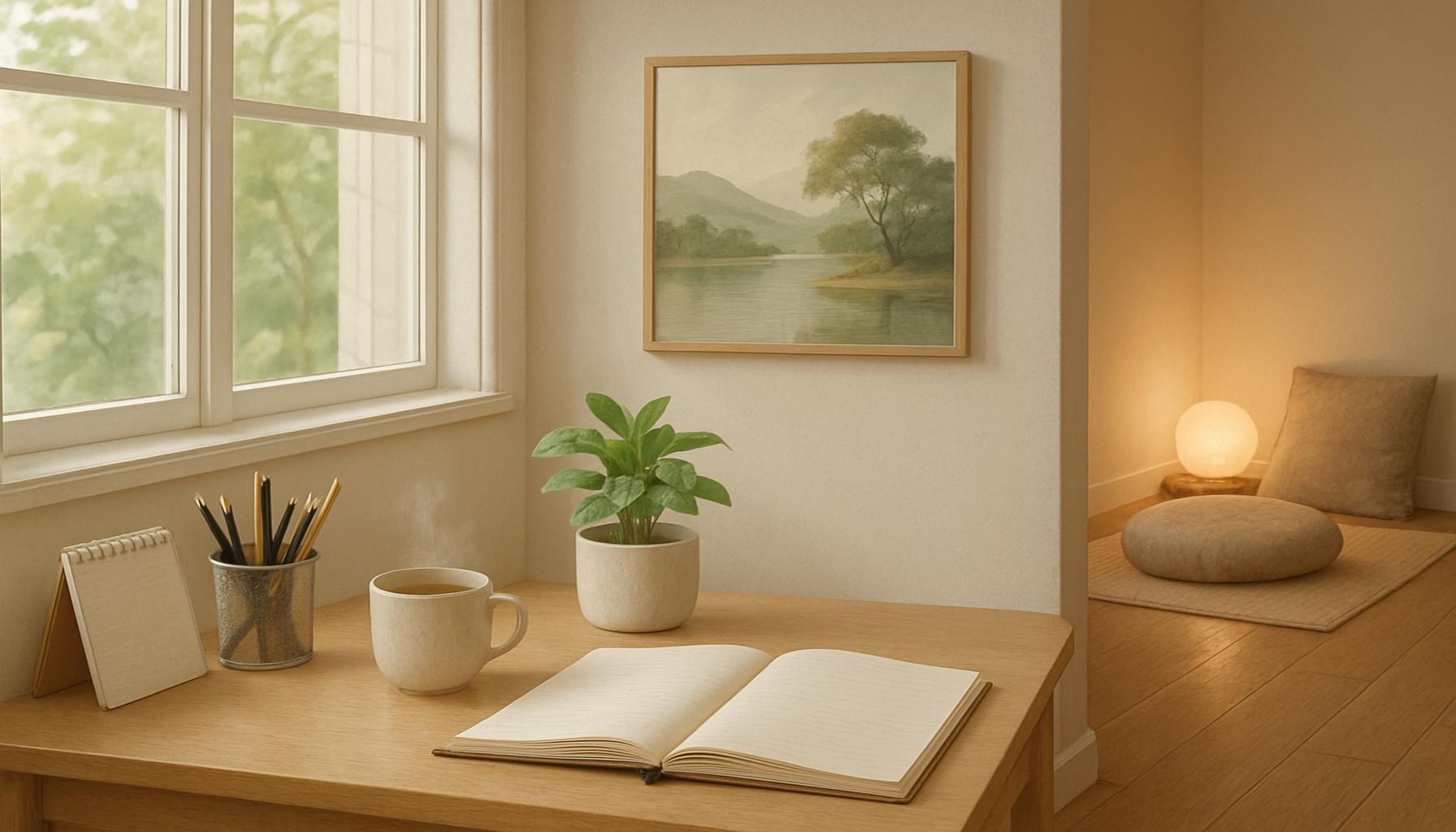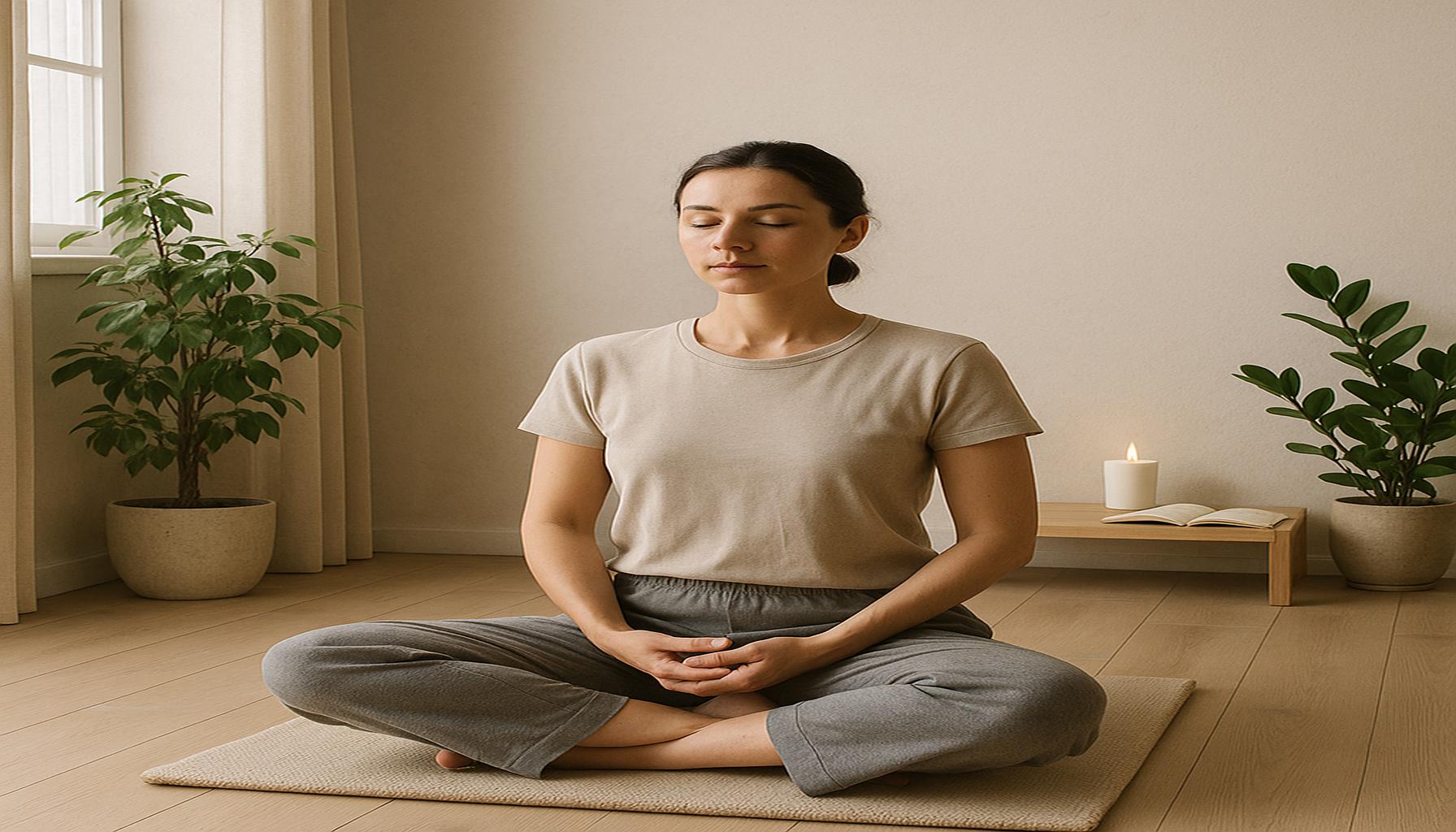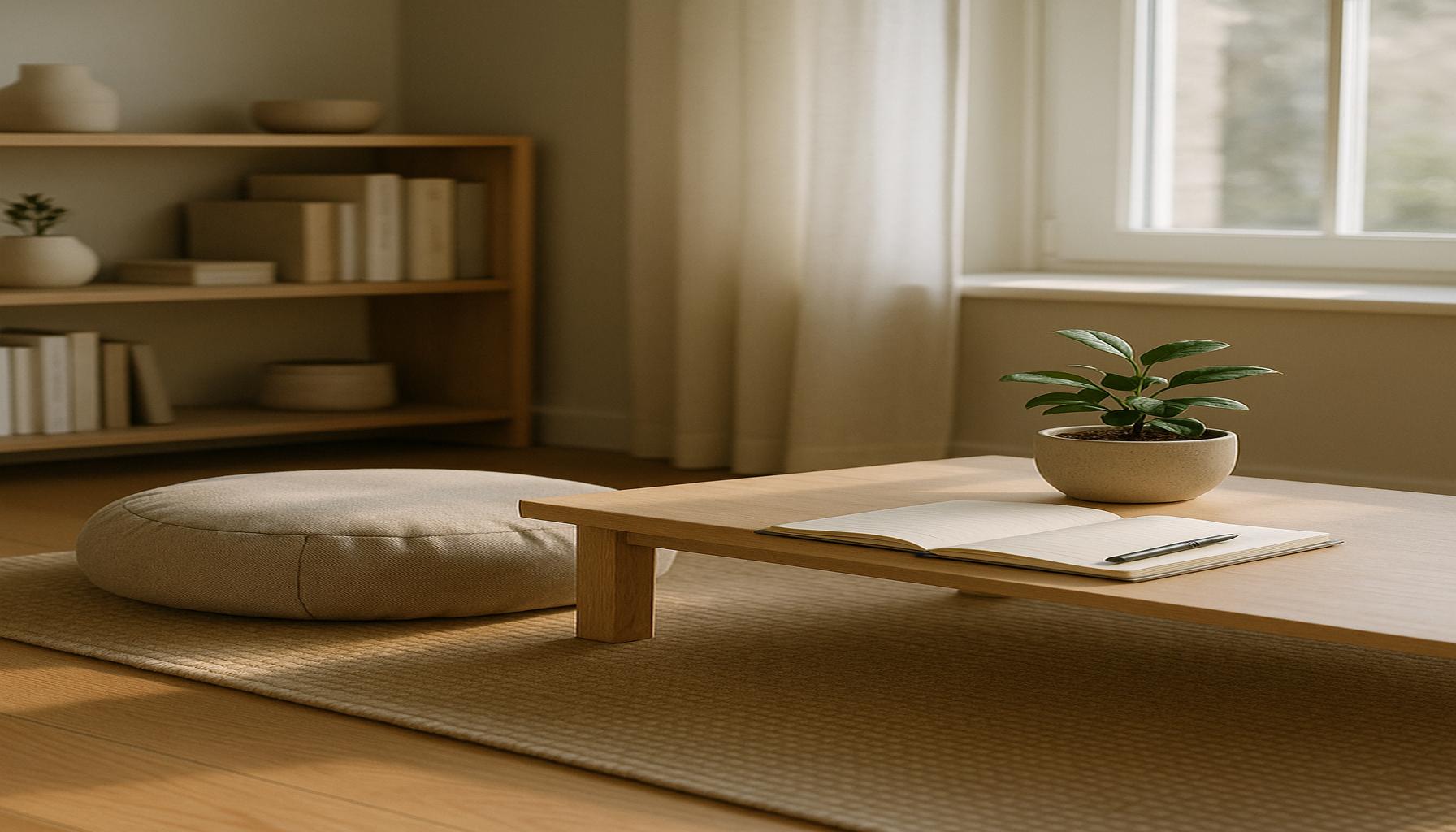Simplify Life with Mindfulness Key Tool for Minimalism
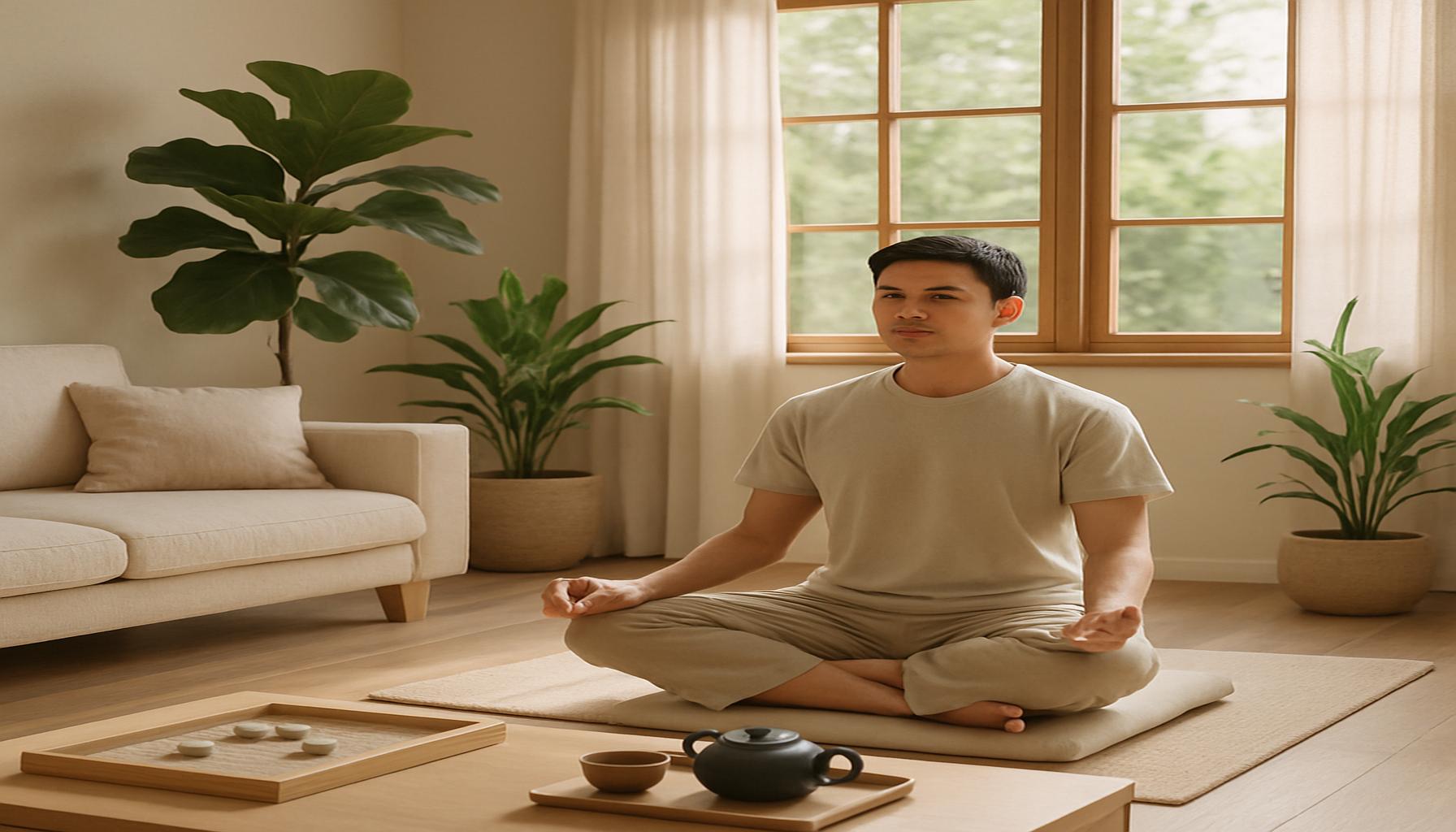
Introduction
In an increasingly chaotic world, many individuals are turning to minimalism as a way to declutter their lives and find deeper meaning in their experiences. The philosophy of minimalism argues that by removing excess, we can create more space for what truly matters, both physically and mentally. This is where mindfulness enters the picture, serving as a critical technique to help simplify life and enhance the minimalist lifestyle.
Mindfulness encourages present-moment awareness, enabling individuals to notice their thoughts, emotions, and surroundings without judgment. By incorporating mindfulness practices into daily routines, one can cultivate a sense of clarity and focus, which aligns seamlessly with the goals of minimalism. Here are some key points that illustrate the connection:
- Enhanced awareness of what is essential.
- Reduced clutter in thoughts and surroundings.
- Improved decision-making regarding possessions and commitments.
This article will explore the synergy between mindfulness and minimalism, while also outlining the Top 5 Mindfulness Practices that can help transform your lifestyle. Whether you’re just starting your minimalism journey or looking to deepen your practice, these tools will guide you toward a more intentional, simplified existence.
Top 5: Mindfulness as a Tool for Simplifying Life through Minimalism
In today’s rapid-paced society, the harmonious blend of mindfulness and minimalism serves as a refreshing antidote to the chaos. Mindfulness, a time-honored practice rooted in being fully present, aligns perfectly with the principles of minimalism, which focuses on streamlining life to its essentials. This article explores how cultivating mindfulness can significantly contribute to simplifying life through minimalism. Through these top five ways, you will discover how mindfulness is not just a meditative exercise, but a practical tool for fostering clarity, reducing stress, and enriching life.
5. Cultivating Awareness of Possessions
A peculiar yet significant aspect of minimalism is having a genuine understanding of what we own and why we own it. Mindfulness nurtures a profound awareness of our possessions, prompting individuals to pause and thoughtfully reflect on the items within their environments. This introspective approach can shift the focus from amassing goods in terms of quality over quantity — a cornerstone of minimalistic living.
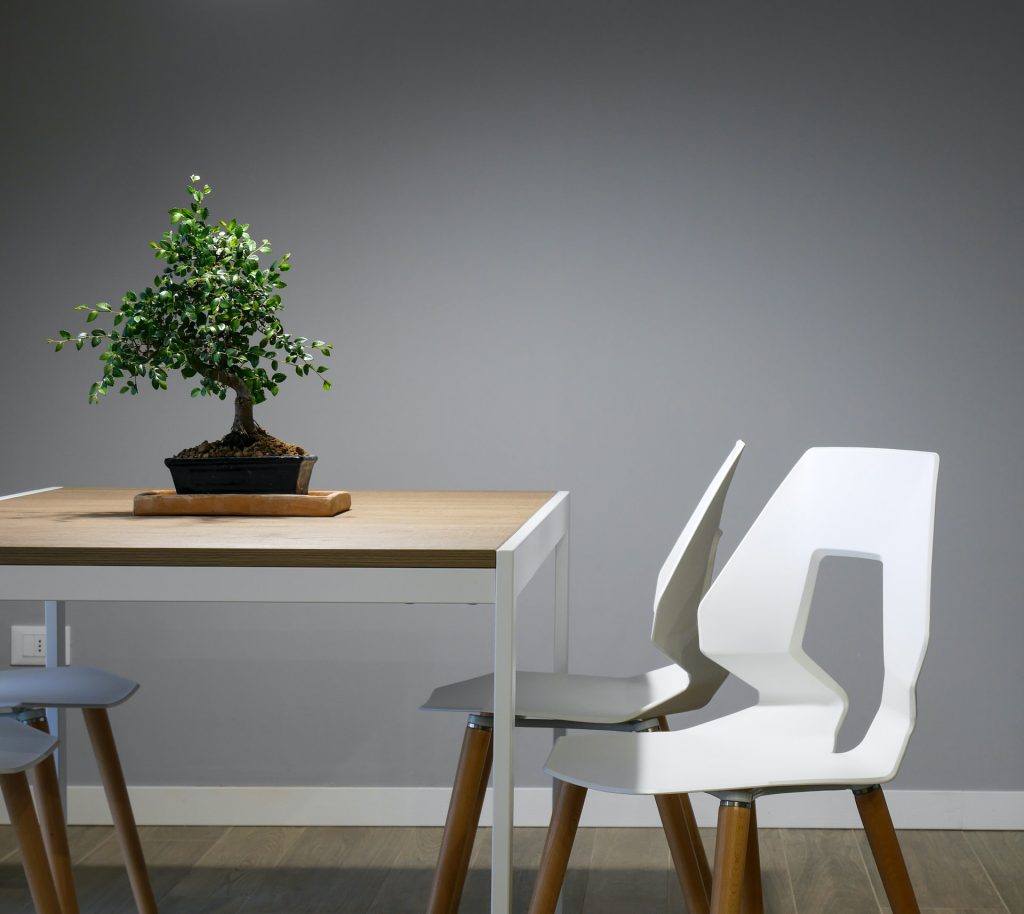
Consider this scenario: when standing in front of an overflowing wardrobe, mindfulness encourages us to question, “Which clothes are truly aligned with my needs and lifestyle?” This reflection leads to a reduction of unnecessary items that consume space and attention without serving a meaningful purpose. Instead, it empowers individuals to cherish and utilize what truly matters. This intentional curation of belongings simplifies living spaces and removes the emotional attachment to items that merely clutter one’s life.
4. Reducing Decision Fatigue
Every day, individuals are faced with countless choices, from mundane selections like what to wear or eat to more significant decisions concerning work or personal relationships. This inundation can lead to decision fatigue, where making effective choices becomes increasingly challenging. Mindfulness offers a viable solution by fostering a focus on the present, diminishing distractions, and enhancing clarity.
This practice is mirrored in the core activities of everyday life:
- Mindful Eating: By savoring each bite, individuals become more in tune with hunger and satisfaction cues, which often leads to healthier dietary decisions.
- Mindful Clothing Choices: Simplifying wardrobe options to those that resonate with personal style minimizes morning stress and enhances confidence.
- Mindful Scheduling: Prioritizing high-value activities over cluttered calendars results in meaningful time allocation, heightening life satisfaction.
When decision-making is grounded in awareness, individuals can more easily prioritize desires, needs, and values, leading to a life where clutter—whether mental or material—is significantly reduced.
3. Enhancing Focus and Productivity
In a world that often glorifies multitasking, being present seems like a luxury. However, mindfulness hones the muscle of concentration, critical for embracing minimalism. Through focused presence, distractions wane, thus promoting productivity and efficiency.
Consider the application of mindfulness in the workspace: By allocating dedicated time intervals for tasks, employing techniques like the Pomodoro Technique—work sessions interspersed with short breaks—productivity soars while preventing burnout. This method supports deep work while maintaining a harmonious work-life balance, reflecting minimalistic values.
Beyond the professional realm, mindfulness encourages engagement in personal projects and interests, enriching one’s life with joyful pursuits rather than superficial distractions.
2. Promoting Emotional Well-being
The emotional landscape of minimalism extends beyond physical decluttering, and mindfulness serves as a bridge to emotional simplicity. It guides individuals to sit with their thoughts and feelings, recognizing emotional triggers tied to accumulation.
For instance, consider the tendency to accumulate items during times of stress or change, seeking comfort in ownership. Mindfulness invites individuals to not only notice these patterns but also to adopt healthier coping mechanisms. By letting go of attachments and embracing gratitude, emotional resilience and contentment are nurtured.
This exploration into emotional well-being aligns with minimalism by fostering a peaceful relationship with oneself and one’s possessions, allowing individuals to cultivate an environment that supports mental clarity and peace.
1. Creating Authenticity in Life Choices
Minimalism is essentially an exploration of authenticity—aligning life with true personal values. Mindfulness acts as a catalyst in this journey by providing individuals insights into their genuine desires and challenges.
Take the example of someone overwhelmed by a relentless pursuit of societal benchmarks—more success, more possessions, more connections. Through regular mindfulness practice, this individual can peel away these pressures to uncover what truly brings joy and purpose.
This discovery is the essence of minimalism: casting aside the superfluous and embracing what aligns with the heart’s core values. It’s a testament to living stripped of excess while nurturing a life of genuine fulfillment. Mindful practices prompt individuals to navigate life with intention, ensuring their actions, possessions, and choices resonate with their inner authenticity.
In conclusion, embracing mindfulness within the framework of minimalism offers a transformative synergy that can reshape perspectives on possessions, productivity, and emotional well-being. By fostering awareness, simplifying decisions, enhancing focus, nurturing emotional health, and striving for authenticity, individuals can lead lives full of simplicity and purpose—a true embodiment of minimalistic living.
| Category | Key Features | Advantages | Disadvantages | Beneficiaries |
|---|---|---|---|---|
| Mental Clarity | Mindfulness promotes a focused state of mind by reducing distractions. | Improves decision-making and enhances creativity through clearer thoughts. | Requires consistent practice which may lead to frustration if immediate results are not seen. | Individuals seeking better concentration and creativity in their daily lives. |
| Emotional Well-being | Mindfulness helps individuals be present in the moment, leading to a better understanding of emotions. | Reduces stress and anxiety by encouraging a non-judgmental acceptance of feelings. | Can surface unresolved emotions which may initially feel overwhelming. | People dealing with stress, anxiety, or emotional turmoil. |
| Simplicity in Living | Mindfulness encourages prioritization of experiences over material possessions. | Encourages minimalist practices and helps in decluttering both physical and mental spaces. | May challenge existing lifestyles or societal values, creating resistance from others. | Those looking to embrace a minimalist lifestyle and simplify their environments. |
| Improved Relationships | Practicing mindfulness enhances active listening and empathy in interactions. | Fosters deeper connections by being fully present with others. | Requires ongoing commitment; lapses in practice can affect interpersonal dynamics. | Anyone seeking to enhance their personal and professional relationships. |
Mindfulness serves as a powerful ally in the pursuit of minimalism, allowing individuals to focus on what truly matters while discarding the trivial. Understanding and embracing the mental clarity, emotional well-being, simplicity in living, and improved relationships it offers can significantly influence one’s lifestyle. By implementing mindfulness into everyday routines, individuals not only simplify their physical environment but also cultivate a deeper sense of purpose and satisfaction in their lives.
Frequently Asked Questions about Mindfulness and Minimalism
What is the relationship between mindfulness and minimalism?
Mindfulness and minimalism are interconnected in their core principle of focusing on what truly matters. Both practices encourage individuals to prioritize their values and needs over societal pressures. Mindfulness helps in honing one’s attention and awareness, allowing for conscious decision-making. This complements minimalism, which advocates for reducing excess in various aspects of life to enhance overall well-being.
How can mindfulness help simplify my life?
Mindfulness can simplify your life by fostering a present-moment awareness that reduces mental clutter and stress. By practicing mindfulness, you become more aware of your thoughts and feelings, allowing you to make intentional choices rather than reacting impulsively. This leads to a more organized, focused, and simplified lifestyle, aligning with minimalist ideals.
Can mindfulness practice lead to a more minimalist lifestyle?
Yes, mindfulness practice can naturally lead to a more minimalist lifestyle. As you cultivate mindfulness, your awareness of what is truly important to you sharpens. You begin to let go of unnecessary possessions, commitments, and distractions, which are often accumulated without conscious intention. This mindful approach to life fosters a greater sense of clarity and purpose, key components of minimalism.
Do I need to meditate to practice mindfulness in minimalism?
While formal meditation is a powerful way to practice mindfulness, it is not the only method. Mindfulness can be integrated into routine activities like eating, walking, and even working, by simply focusing on the task at hand. This everyday application of mindfulness can effectively support a minimalist lifestyle by helping you stay grounded and aware of your choices and actions.
Are there any scientific benefits of combining mindfulness with minimalism?
Research suggests that both mindfulness and minimalism independently offer several benefits, such as reduced stress, increased focus, and greater life satisfaction. When combined, these practices can potentially amplify these benefits. By reducing distractions and fostering a focused mindset, individuals may experience enhanced mental clarity, emotional resilience, and a balanced lifestyle, all supported by empirical studies in psychology and behavioral science.
Conclusion
In a world dominated by constant distractions and overwhelming choices, the symbiotic relationship between Mindfulness and Minimalism emerges as a beacon of clarity and simplicity. As we explored throughout the article, Mindfulness, with its focus on the present moment, offers a profound avenue for simplifying life through Minimalism. This dynamic duo allows individuals to prioritize what truly matters, fostering spaces—both mental and physical—that are free from clutter.
The practice of Mindfulness cultivates awareness and intention, essential tools for embracing Minimalism effectively. As individuals become more attuned to their thoughts and actions, they find themselves able to discern between wants and needs, which is vital for reducing excess. The benefits of this practice are numerous, ranging from a greater sense of peace and focus to enhanced personal organization and well-being.
Furthermore, the journey toward Minimalism via Mindfulness is not just about physical decluttering but also about mental and emotional clarity. This approach invites individuals to let go of unnecessary emotional baggage, leading to a more profound sense of freedom and balance. As readers reflect on these ideas, it’s evident that both Mindfulness and Minimalism challenge us to live intentionally and embrace simplicity in all facets of life.
Ultimately, integrating Mindfulness into the philosophy of Minimalism offers a transformative pathway to a more fulfilled, conscious lifestyle. As the pursuit of minimalism gains momentum, adopting mindfulness practices could prove invaluable for those seeking to enhance their personal organization and enrich their lives. For those willing to explore further, the potential discoveries are boundless and offer a promising journey toward inner peace and external simplicity.
